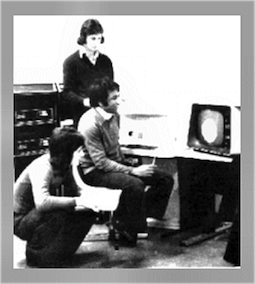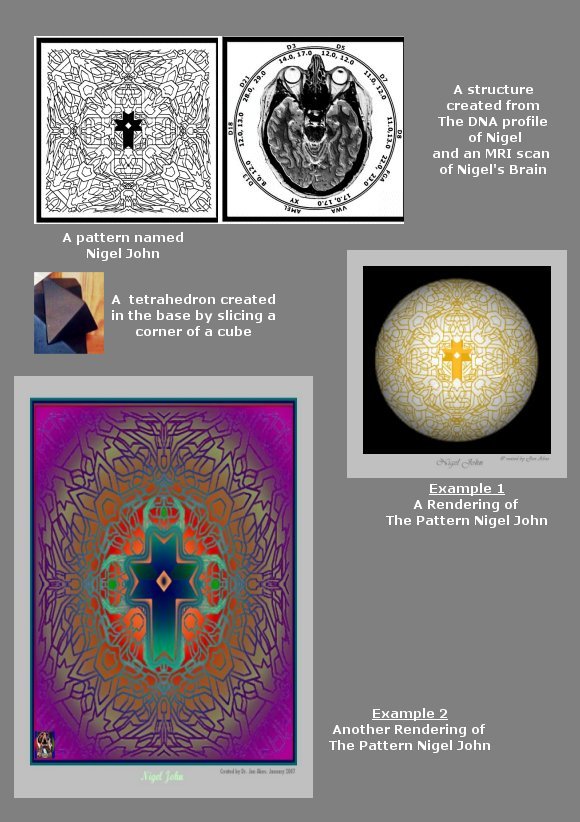Professor Nigel W. John FEG FLSW
Home Research About Contact
Jan Abas Sculpture (2006)

My friend, the late Jan Abas pioneered the use of Computer Graphics in the context of Applied Mathematics at Bangor University in the 1970s.

Jan Abas at the graphics console.
During his retirement, he remained fully active as an author, lecturer and artist, specialising in uniting art and science. When I was given the prestigious Satava Award in January 2006, Jan decided to create a sculpture to mark the occasion. Jan himself had a long interest in the application of computer graphics in medicine and is the author of a pioneering book entitled Computers in Health and Fitness (Chartwell Bratt) which appeared in 1987 and which set out to show how computers will revolutionize medicine, environmental sciences and sport.
The result is a unique work and first of it kind to be produced anywhere. It combines a complex personalised pattern with my own DNA profile and an image slice from a MRI scan of my brain. The materials used are (i) high optical quality crystal glass, and (ii) Welsh Slate.
Jan explains the elements and symbolism employed in the art work as follows:
 In Step 1, Jan created a unique symmetric pattern to symbolize my brain (the brain is essentially a pattern recognizer and is tuned to respond to symmetry). In this pattern a cross appears in the centre, because of my Christian faith.
In Step 1, Jan created a unique symmetric pattern to symbolize my brain (the brain is essentially a pattern recognizer and is tuned to respond to symmetry). In this pattern a cross appears in the centre, because of my Christian faith.
Step 2 involved obtaining my DNA profile in numerical form. This was supplied by the Company DNA Worldwide Group. The MRI scan was obtained thanks to the Royal Liverpool hospital.
Step 3 involved Jan making a geometrical structure by combining the DNA profile and the MRI scan.
The pattern created in Step 1 and the structure designed in Step 3 were then engraved onto two adjacent faces of a crystal glass cube.
It was decided to use Welsh Slate for the base to emphasize the significance of Slate to Wales and the fact that I was then based at Bangor University. The base is a cube with one corner sliced off to produce a tetrahedron. This signifies the fact that a tetrahedral net is a basic structure used in 3D volume modeling in computer graphics. Finally, it is worth mentioning that the basic pattern created in Step 1 can be rendered in an infinite number of ways to produce designs which may be utilized to create other art objects. Two examples are shown. The design in Example 1 could be used to produce a lamp shade and the one in Example 2 would create a beautiful stained glass window.